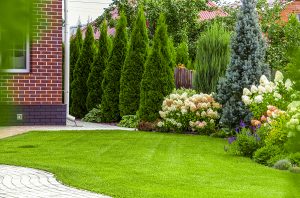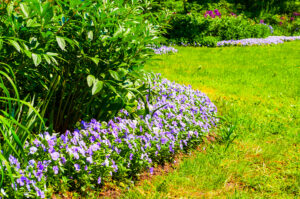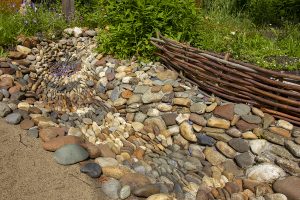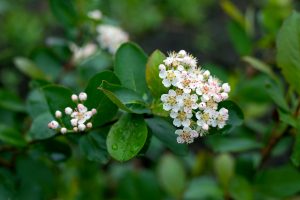 Effective backyard design should support year-round use, not just summer months. With the right mix of structure, plantings, and outdoor living features, your landscape can remain functional, visually balanced, and comfortable in every season. In this blog, we’ll outline key strategies for backyard design for all seasons, from foundational elements to seasonal plant planning. Continue reading Backyard Designs for All Seasons
Effective backyard design should support year-round use, not just summer months. With the right mix of structure, plantings, and outdoor living features, your landscape can remain functional, visually balanced, and comfortable in every season. In this blog, we’ll outline key strategies for backyard design for all seasons, from foundational elements to seasonal plant planning. Continue reading Backyard Designs for All Seasons
Backyard Designs for All Seasons
 Effective backyard design should support year-round use, not just summer months. With the right mix of structure, plantings, and outdoor living features, your landscape can remain functional, visually balanced, and comfortable in every season. In this blog, we’ll outline key strategies for backyard design for all seasons, from foundational elements to seasonal plant planning. Continue reading Backyard Designs for All Seasons
Effective backyard design should support year-round use, not just summer months. With the right mix of structure, plantings, and outdoor living features, your landscape can remain functional, visually balanced, and comfortable in every season. In this blog, we’ll outline key strategies for backyard design for all seasons, from foundational elements to seasonal plant planning. Continue reading Backyard Designs for All Seasons
 Creating a seamless indoor-outdoor transition is one of the most effective ways to extend your living space and improve how you use your home year-round. With strategic landscape design, you can connect indoor and outdoor spaces in a way that enhances comfort, flow, and overall property value. In this blog, we’ll explore expert-level strategies to help you bridge the gap between your home and your landscape.
Creating a seamless indoor-outdoor transition is one of the most effective ways to extend your living space and improve how you use your home year-round. With strategic landscape design, you can connect indoor and outdoor spaces in a way that enhances comfort, flow, and overall property value. In this blog, we’ll explore expert-level strategies to help you bridge the gap between your home and your landscape.  If your outdoor space feels a little too exposed, planting for privacy is a natural and effective way to create separation—without the need for fencing or hard barriers. With the right design, plantings can soften sightlines, buffer noise, and define boundaries while enhancing the overall look of your landscape. Here’s how to approach privacy-focused planting with creativity and intention.
If your outdoor space feels a little too exposed, planting for privacy is a natural and effective way to create separation—without the need for fencing or hard barriers. With the right design, plantings can soften sightlines, buffer noise, and define boundaries while enhancing the overall look of your landscape. Here’s how to approach privacy-focused planting with creativity and intention.  If you’re looking to lead an eco-friendlier lifestyle, your landscape is a good place to start. A sustainable landscape – one that takes advantage of native plants and erosion control – not only lowers your carbon footprint but contributes some stunning aesthetic to your property. Let’s review how you can build a sustainable landscape and contribute to the fight against climate change.
If you’re looking to lead an eco-friendlier lifestyle, your landscape is a good place to start. A sustainable landscape – one that takes advantage of native plants and erosion control – not only lowers your carbon footprint but contributes some stunning aesthetic to your property. Let’s review how you can build a sustainable landscape and contribute to the fight against climate change.  Is your yard a swamp? Do the soles of your shoes become saturated with water every time you step outside after a drizzly day? In New England, it’s not out of the ordinary to hear of a flooded basement, soil erosion, or deep, lingering puddles overtaking one’s yard due to the hectic weather patterns. Fortunately, many eco-friendly drainage solutions are available to help your property absorb heavy rainfall and direct water runoff away from your home.
Is your yard a swamp? Do the soles of your shoes become saturated with water every time you step outside after a drizzly day? In New England, it’s not out of the ordinary to hear of a flooded basement, soil erosion, or deep, lingering puddles overtaking one’s yard due to the hectic weather patterns. Fortunately, many eco-friendly drainage solutions are available to help your property absorb heavy rainfall and direct water runoff away from your home.  One of the keys to a thriving landscape is a healthy ecosystem. When it comes to adding plants to your garden, what do you think about? It might pay to learn more about native plant options for the success and ease of maintenance they will have in your landscape. In this article, we will further discuss the benefits of using native plants in your landscape.
One of the keys to a thriving landscape is a healthy ecosystem. When it comes to adding plants to your garden, what do you think about? It might pay to learn more about native plant options for the success and ease of maintenance they will have in your landscape. In this article, we will further discuss the benefits of using native plants in your landscape.  Pollinators – such as bees, butterflies, and hummingbirds – play a critical role in flower reproduction and fruit and vegetable growth. Planting a pollinator-friendly garden will not only contribute to your property’s aesthetic but with the dwindling numbers of pollinators, you’re helping to preserve their populations. Since planting and maintaining a pollinator-friendly garden can be a complex task, read about our helpful tips to get you started.
Pollinators – such as bees, butterflies, and hummingbirds – play a critical role in flower reproduction and fruit and vegetable growth. Planting a pollinator-friendly garden will not only contribute to your property’s aesthetic but with the dwindling numbers of pollinators, you’re helping to preserve their populations. Since planting and maintaining a pollinator-friendly garden can be a complex task, read about our helpful tips to get you started.